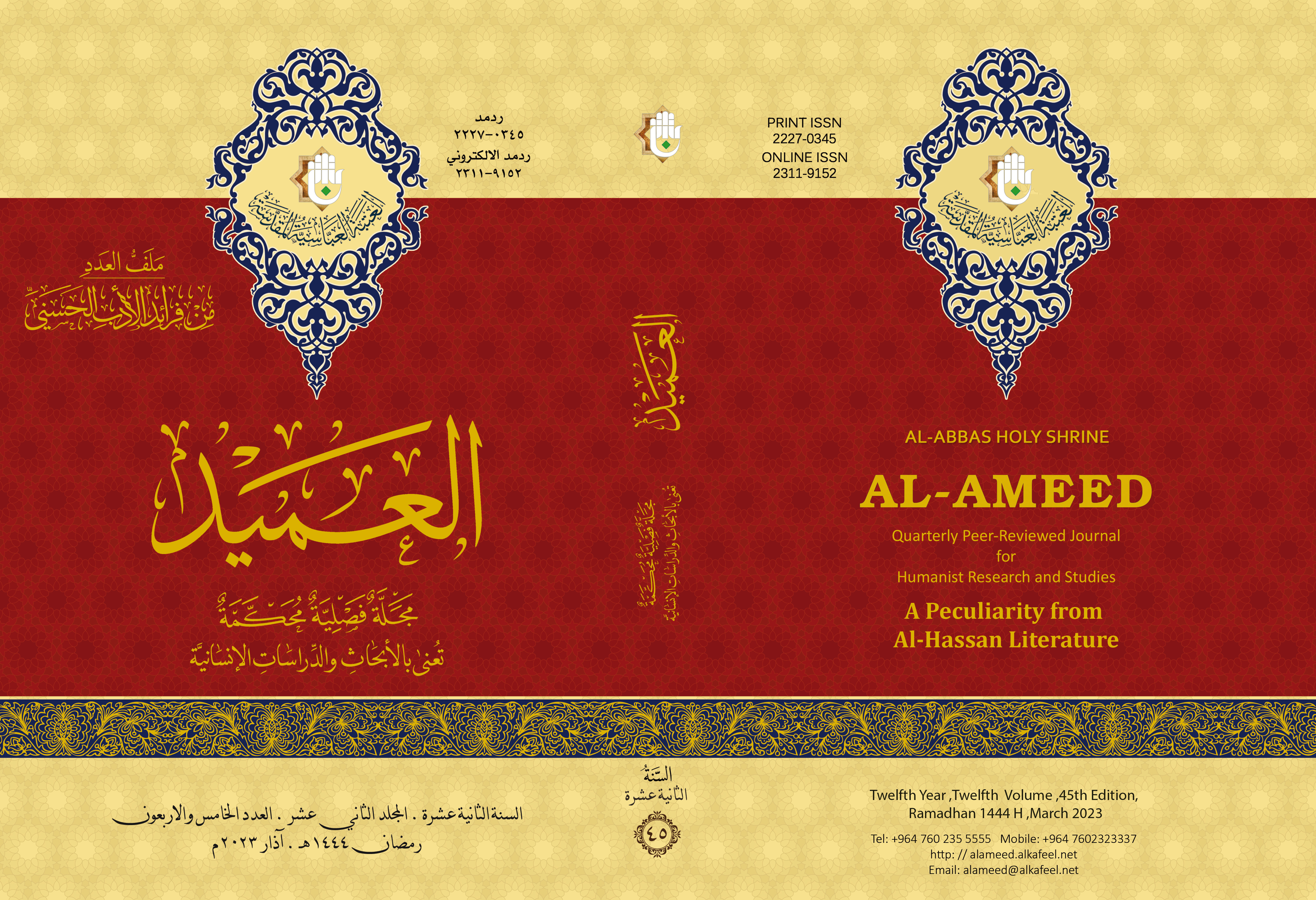الصور الشعرية في الشعر الفلسطيني المقاوم بعد نكسة 1967م (دراسة أسلوبية في المستويين الدلالي والبلاغي)
DOI:
https://doi.org/10.55568/amd.v12i45.135-170الكلمات المفتاحية:
شعر ما بعد النكسة، الصور الشعرية، الأساليب البيانية، المستوی الدلالي، المستوی البلاغيالملخص
لقد حظيت الصور الشعرية علی وجه العموم والصور الشعرية البيانية المتمثّلة في التشبیه والاستعارة والكناية بشكل خاص بمكانة مميزة في الدراسات النقدية والبلاغية؛ إذ تعتبر جوهر الشعر وفق ما ذهب له الباحثون. لقد تبلورت جوانب التطوّر والتجدید في الشعر الفلسطيني المقاوم بعد نكسة 1967من النواحي الأسلوبية خاصة في صوره الشعرية البيانية؛ من منطلق هذا الأمر تهدف المقالة الحالية دراسة الصور الشعرية البيانية في الشعر الفلسطيني المقاوم بعد نكسة 1967م من منظور أسلوبي والكشف عن دور هذه الصور في المستويين الدلالي والبلاغي. طبّقت الدراسة المنهج الوصفي – التحليلي والإحصائي. تكوّنت عينة الدراسة من خمسة دواوين يرصد أهم أحداث فترة النكسة 1967م ومابعدها والذي يدور في فلك واحد وهو المقاومة. ما توصّلت إليه المقالة هو أنّ الاستعارة من أهم الوسائل الفنية التي قام بتوظيفها شعراء ما بعد النكسة للتعبير عن القضايا التي يعيشونها وذلك بنسبة مئوية مقدارها 59.5%، ويليها التشبيه بنسبة 25% ثم الكناية بنسبة 15.5%، يميل أغلب الصور التشبيهية في شعر ما بعد النكسة نحو المادية والحسية في التصوير؛ فيما يتعلّق بالجانب الدلالي لهذه الصور قد انتزع شاعر النكسة معظم الصور التشبيهية من أجواء فلسطين المحتلة والظروف المأساوية التي تعيشها من قتل ودمار وتشريد. اما الصور الاستعارية فتجد أنّ معظم الصور الاستعارية الموظّفة في قصائد هذه الحقبة لا يصل إلی درجة التعمية والتعميق في الغموض والبعد وتنزع نحو المادية والحسية في تصوير المحسوسات والمعنويات؛ اما الجانب الدلالي فنلاحظ أنّ الوطن ومظاهر الاحتلال هما أكثر حضوراً في الصور الاستعارية الموظفة لقصائد هذه المدة. اما الصور الكنائية فنلاحظ أنّ الكناية عن الصفة حازت المرتبة الأولی من بين أنواع الصور الكنائية؛ والتي تعبّر عن ميل شعراء هذه المدة إلی تجسيد الأفكار والمشاعر في صور حسية معبّرة عن الواقع المراد تصويره.
التنزيلات
منشور
إصدار
القسم
الرخصة
الحقوق الفكرية (c) 2022 (CC BY-NC)

هذا العمل مرخص بموجب Creative Commons Attribution-NonCommercial 4.0 International License.


